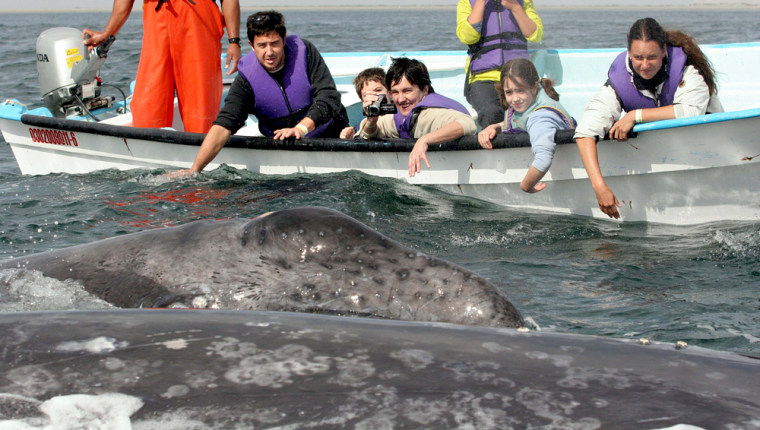The number of gray whales making a yearly migration from the icy North Pacific to breed in Mexico's warm lagoons has dropped this year, scientists say, possibly because of changing weather patterns.
Gray whale researcher William Megill said food shortages in the whales' feeding grounds near Canada and Alaska mean that some of the thousands who make the annual 5,000-mile journey have departed late or even stayed behind this year.
Other researchers said Thursday that warmer sea temperatures in the Bering Sea could be contributing to changes in migration patterns.
Megill, a lecturer at Britain's Bath University, warned those that made the trip may be undernourished and said he feared many could die from lack of energy on their return trip north later in the year.
"We saw in British Columbia this year there was nothing to eat until well into September," he told Reuters at San Ignacio lagoon on Mexico's Baja California peninsula. "I wouldn't be surprised to see carcasses up and down the coast, because they didn't have enough food."
Down by half
According to Megill's latest census, around 90 whales had made it to San Ignacio by February, down by about a half compared to the same month in 2005.
Every year thousands of gray whales spend several months swimming from their northern feeding grounds to warm lagoons with a high salt content along Mexico's Baja California peninsula.
Once there, pregnant whales give birth to half-ton calves, teach their young to swim in the buoyant salty waters, look for partners and mate.
Whale-watching in the lagoons is a popular tourist attraction. Gray whales in the lagoons sometimes approach visitors' boats and let humans touch them.
Last week, dozens of the mammals -- which can grow 50 feet long and weigh up to 40 tons -- swam near the surface with new-born calves, while others flipped their forked tales out of the water in mating rituals.
The whales, which were removed from the U.S. endangered species list in 1994, arrive in the lagoons between December and February and start their return journey in April.
Changing dining areas?
Research in traditional feeding grounds in the northern Bering Sea between Alaska and Siberia shows an abrupt rise in temperatures there since 2000, and a decline in the worm and shrimp colonies that nourish the whales.
Sue Moore, head oceanographer at the University of Washington, said the whales appeared to be adapting to changing environmental conditions in the North by feeding in new areas and heading South later in the year.
But she did not believe the whales faced greater challenges this year than in other years.
"I do not think they are suffering starvation at this point -- gray whales are very resilient and can feed on a variety of prey all along their migration route," she said.
Between 1999 and 2000, hundreds of gray whales washed up along the West coast of the United States and Canada, after they apparently suffered food shortages as a result of climatic changes related to the El Nino phenomenon.
Recent changes in weather patterns in the North Atlantic are harder to explain, say researchers at the U.S. National Oceanic and Atmospheric Administration, since El Nino had little effect in 2005.
